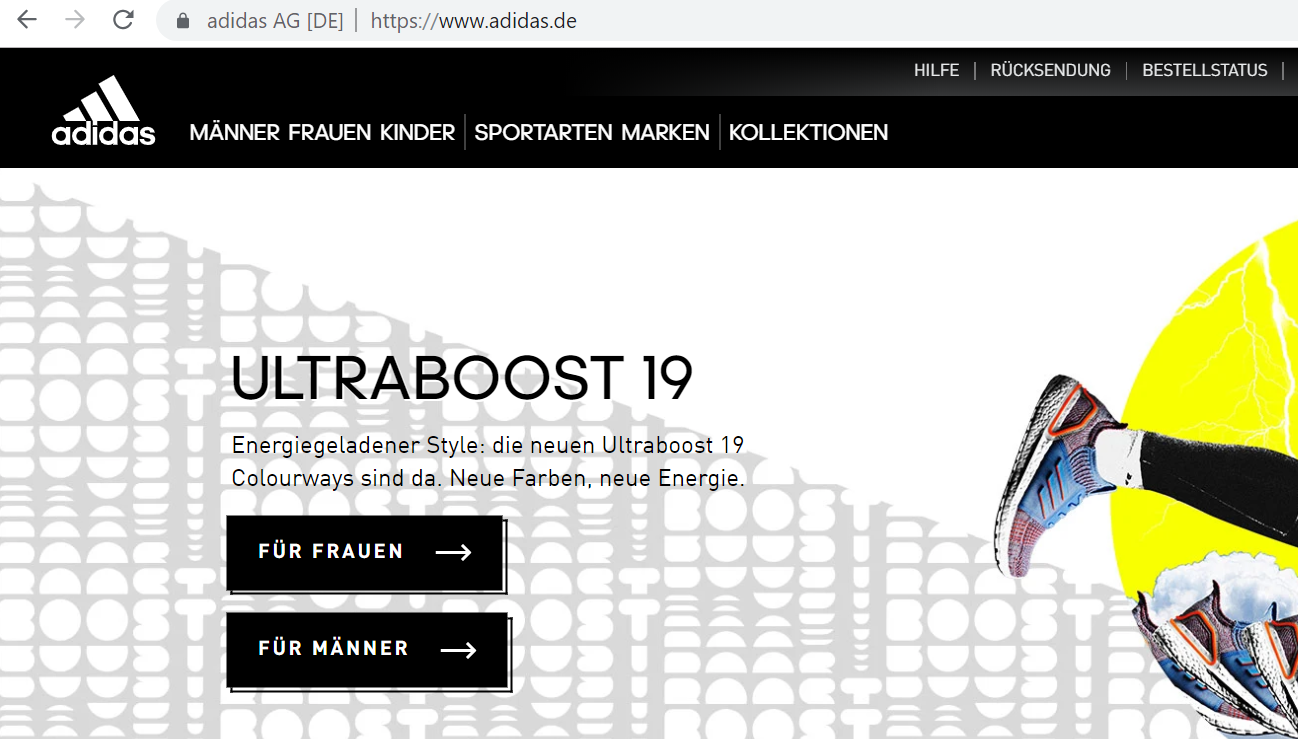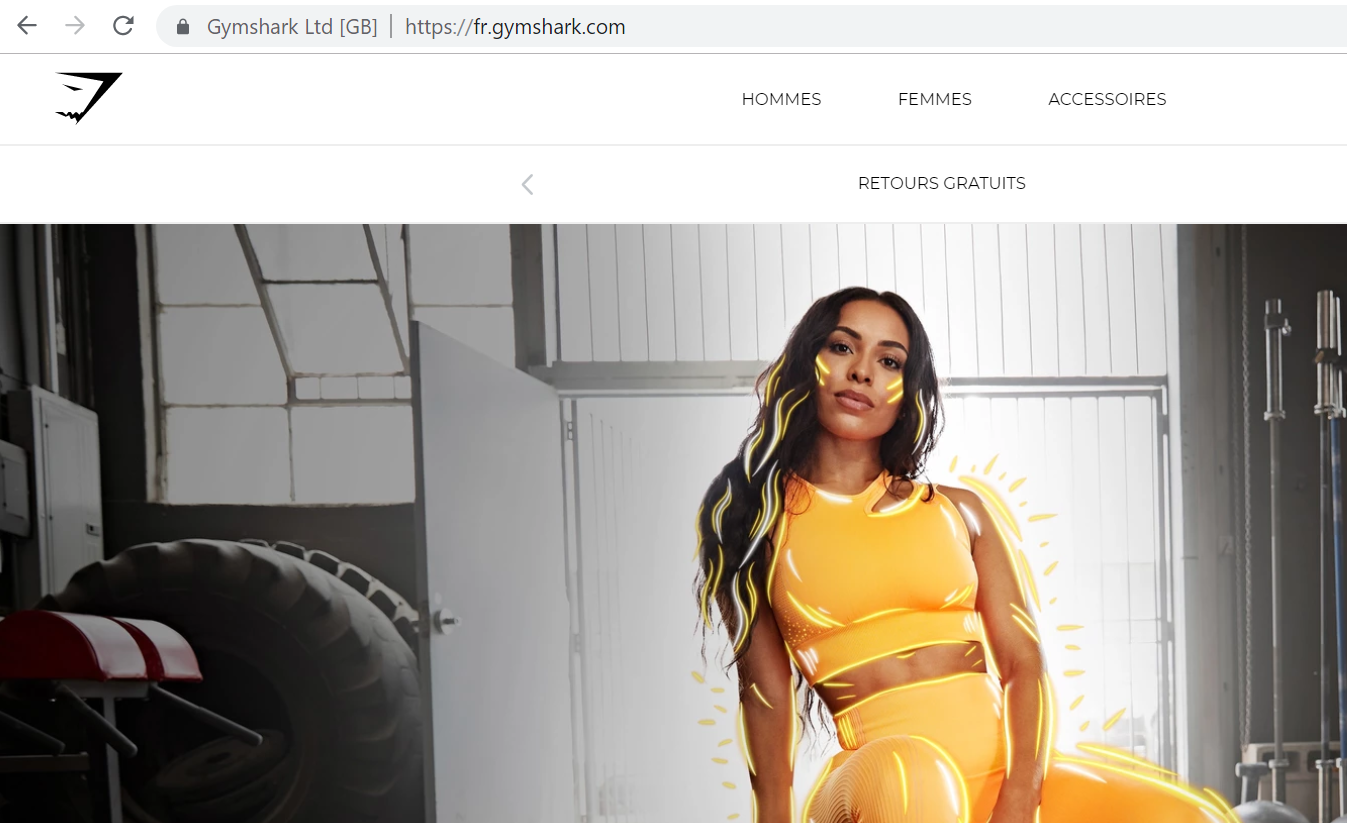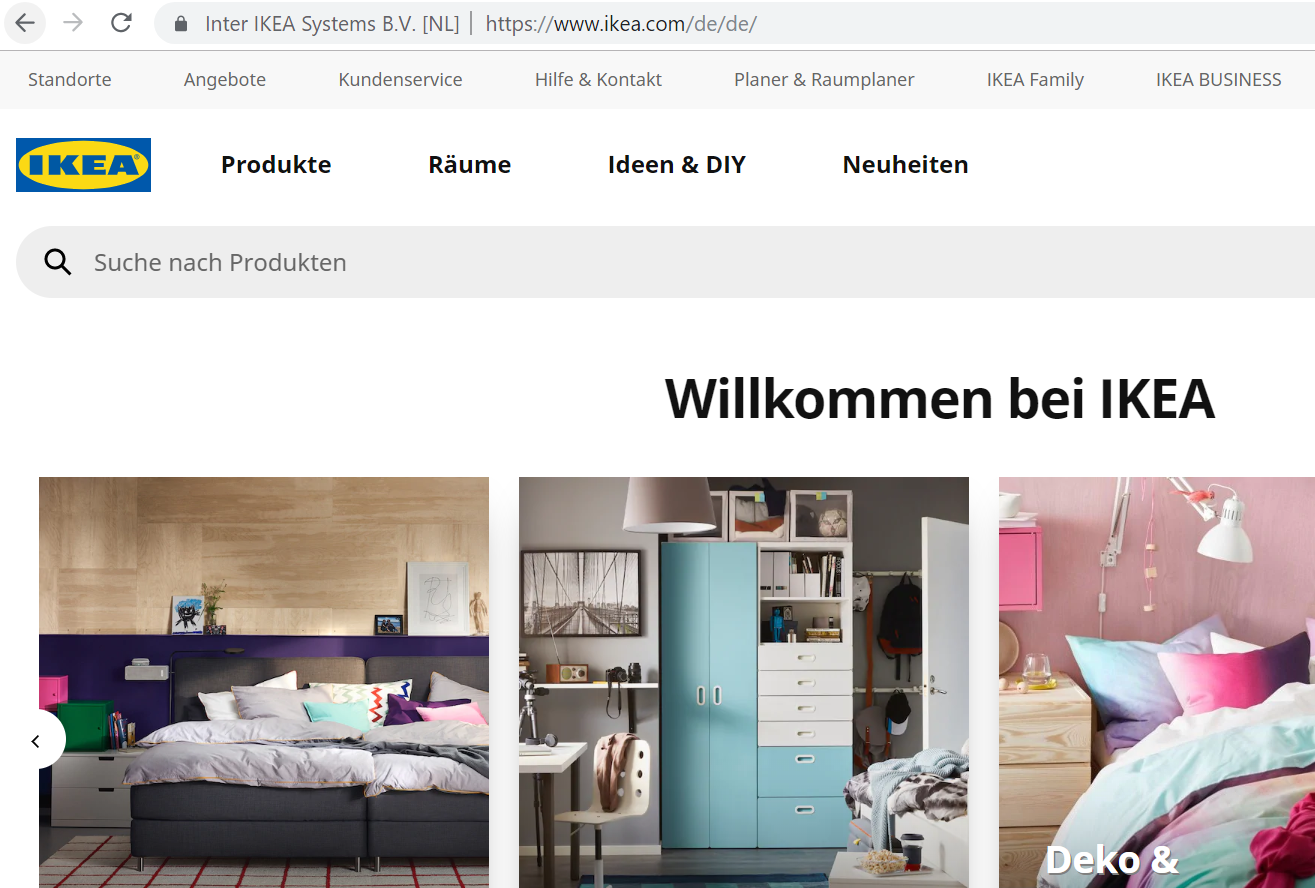Shopify Internationalisation: How to Choose the Right International URL Structure
Ready to go global? Join us as we walk through the three main options for international URL structures and help you decide which one is best for your business.
Written By
Hannah Smiddy

[Editor’s note: This post was updated in October 2022.]
So, you’ve decided to take the leap and expand your brand overseas. This is a fantastic opportunity to reach new audiences and take your business to the next level.
One of the most important decisions you’ll need to make is how to structure your ecommerce site.
Generally, there are three choices for structuring your international domain architecture:
1. Using a country code top-level domain, or ccTLD as it’s commonly known: examplewebsite.co.uk
2. Using a subdomain: uk.examplewebsite.com
3. Using a subdirectory: examplewebsite.com/uk
These different structures are interpreted differently by search engines, so each have pros and cons that need to be considered. Ultimately, the international URL structure you choose depends on what is best for your own business.
If you’re struggling to weigh up the benefits and drawbacks of each option, fear not. We’ve got you covered.
We’ve rounded up a comprehensive list of pros and cons of each international URL structure. We hope that this will help you understand the different options available when it comes to scaling your website, and get you well on the way to global ecommerce domination!
#1 Country code top-level domains (ccTLDs)
ccTLDs use two-letter codes to show users and search engines in which country a website is registered. They explicitly target specific countries and regions, not languages. Both Google Search Console and Bing Webmaster Tools automatically geotarget a ccTLD to the assigned country.
Let’s take a look at a few real-life examples. The ccTLD is in bold:
- https://www.amazon.fr (automatically targets users in France)
- https://www.groupon.es (automatically targets users in Spain)
- https://www.adidas.de (automatically targets users in Germany)

Now we know what a ccTLD structure looks like, we’ll consider its pros and cons.
ccTLD pros
✔️ Many SEO experts argue that using a ccTLD is the single most effective way of telling a search engine and your audience which country you’re targeting with your content. It sends a clear geolocation signal to search engines.
✔️ This structure offers the easiest way to rank for keywords locally.
✔️ ccTLDs are intuitive for users – the target country is clearly apparent in the URL.
✔️ You’re likely to see increased click-through-rate from users who prefer to visit local domains.
✔️ You can track multiple ccTLDs in one consolidated Google Analytics view using Cross Domain Tracking.
ccTLD cons
❌ There are significant costs to consider when it comes to implementing and managing a ccTLD, including purchase of the domain, IT resources to complete site set-up, and ongoing site maintenance. Plus, costs will increase with the more countries you target in this way.
❌ If you have multiple ccTLD sites for your business, these will be seen as entirely separate sites by search engine crawlers. This means they have separate domain authority, and link equity cannot be shared. You’ll therefore have to build up the authority of each ccTLD separately.
❌ There are strict ccTLD requirements for some countries. In some cases, the individuals seeking to register a domain must hold citizenship with the country in order to qualify to use the ccTLD.
Who are ccTLDs best for?
Because of the significant investment required, ccTLDs are most suitable for larger, internationally-known brands that already have a presence in international markets. You’ll need access to extensive development, design and marketing resources to build and maintain multiple sites, each with localised content written in the local language.
Ideally, you’ll offer markedly different products or services in each region, with a significantly large audience in each country as well.
So, if you’re an ecommerce brand wanting to target a specific country or countries, and the above characteristics describe your company, a ccTLD could be your perfect match.
#2 Country subdomains
A subdomain is essentially a child domain of a larger parent domain. It is indicated to the left of the root URL. Subdomains are created to organise and navigate to different sections of a website that may be extensive in content or different thematically.
Subdomains can be used to create distinct web pages geared towards certain countries and regions. This is great if you’re operating in international markets and the content and language of your site needs to be customised for each country. Users can browse in their native language, which provides a much better user experience.
Here are a few examples of ecommerce stores who have placed internationalised content on a subdomain. Each subdomain has been bolded:
- https://ca.womensbest.com (Canada)
- https://us.skinnydiplondon.com (US)
- https://fr.gymshark.com (France)

Subdomain pros
✔️ Subdomains are easier to implement and maintain compared to ccTLDs.
✔️ A subdomain structure allows you to geo-target within Google Search Console.
✔️ You can implement Cross Domain Tracking to consolidate different subdomains into a single view in Google Analytics.
Subdomain cons
❌ The use of a subdomain may deter users who prefer to browse locally.
❌ Using a subdomain sends a weaker signal to search engines compared to ccTLDs.
❌ The SEO impact of subdomains is the subject of great debate. Whilst ‘subdomain supporters’ suggest that this structure is great for streamlining site hierarchy and building authority in niche markets, ‘subdomain skeptics’ are quick to argue that subdomains don’t contribute to the authority of your main site. Read more here.
❌ Subdomains come with a higher risk of ‘mislinking’. For instance, many people may link to the ‘www’ of the site accidentally. (Although the use of geo-targeted UX, such as pop-ups if people are on the wrong site, can overcome this.)
Who are subdomains best for?
Subdomains are a good option for sites expecting a strong international push, with the intention of targeting multiple global markets. This structure will be easier and cheaper than purchasing and implementing multiple ccTLDs, so choose this path if you don’t have a lot of time or resources to invest.
The SEO debate surrounding subdomains means that many experts recommend ccTLDs or subdirectories instead. Having said this, there are some well-known global businesses who have placed international content on subdomains, including Topshop, Myprotein and Morphe Cosmetics.
#3 Country subdirectories
A subdirectory, otherwise known as a subfolder, houses a specific subset of content. It is located to the right of the domain.
Some businesses choose to house internationalised content in a country subdirectory of a root domain. Check out the three examples below (subdirectories in bold):
- https://www.apple.com/uk (UK)
- https://www.nike.com/fr (France)
- https://www.ikea.com/de (Germany)

Subdirectory pros
✔️ Using subdirectories provides you with one consolidated backlink profile. They also feed the authority of your main domain. The keywords of a subdirectory are ‘owned’ by your main domain, meaning they’re attached to your main URL. This helps build credibility, which is important for SEO performance.
✔️ If you use a platform such as Google Analytics to track your site’s performance, the use of subdirectories means that your tracking metrics are consolidated for the entire site (without having to implement Cross Domain Tracking).
✔️ This is generally considered the easier and cheaper site structure to set up and manage, depending on the platform being used.
✔️ Shoppers should be less prone to linking mistakes, as this structure follows the standard www.example.com website convention.
✔️ A subdirectory structure allows you to geo-target within Google Webmaster Tools.
Subdirectory cons
❌ Subdirectories are thought to send a much weaker signal to search engines than ccTLDs.
❌ The use of a subdirectory may deter users who prefer to browse locally.
❌ It can be difficult for people to understand the location targeting from the URL alone.
Who are subdirectories best for?
Generally, subdirectories represent a suitable international site structure for companies with well-established brands that don’t have the high volume of content or resources required to maintain multiple sites. If you’re looking to target a specific language or languages, but want to keep maintenance costs to a minimum and don’t have the budget to invest in regional link outreach, subdirectories could be a suitable solution.
Plus, for brands that already have a well-established website, using subdirectories to house international content will mean you’ll benefit from a pre-built link profile.
Subdirectories on Shopify
Until fairly recently, it wasn’t possible to set up international stores on Shopify using a subdirectory structure. However, this all changed following the introduction of Shopify Markets.
Shopify Markets enables support for different international domain structures, including subdirectories, allowing merchants to optimise SEO and offer the same consistent shopping experience for customers around the world, with localised content and buying experiences.
Targeting countries with multiple languages
If you need to target countries that speak multiple languages, this creates yet more decisions when it comes to international URL structure. You have to use combinations of the structures mentioned above in order to apply language targeting and geotargeting at the same time.
Say you want to target users in Canada, where both English and French are spoken. Here are some different options for structuring your site URLs.
If you’ve opted to use a ccTLD (country targeting only), you can add language variations as a subdirectory to your site.
- example.ca/en – a site targeted at Canada with an English variation
- example.ca/fr – a site targeted at Canada with a French variation
Alternatively, you can use a combination of a ccTLD and a subdomain:
- fr.example.ca – a site targeting French-speaking users in Canada
Say you choose to place your Canadian content on a subdomain, then you can target French-speakers using a subdirectory:
- ca.example.com/fr
If you choose to use a subdirectory to house your Canadian content, you can use a second subdirectory to house your language-targeted content. Your multilingual sites would look like this (language is referred to before the country):
- example.com/en-ca
- example.com/fr-ca
HrefLang tags
Don’t forget to implement hreflang tags on sites that have similar content in multiple languages, or content aimed at different geographic regions but in the same language. They are ideal for merchants having to combine multilingual and multiregional website strategies.
These bits of code tells Google which of your websites should rank in which country and for which language. They also prevent the problem of duplicate content by making it clear to the search engine that although it’s the same content, it’s optimised for different people.
Check out Yoast’s ultimate guide to hreflang tags to find out more!
In conclusion
When bringing your content to an overseas audience, the decision over which international URL structure you need is key. There’s no one-size-fits-all solution though. Ultimately, choose the structure that works best for you and your business. Evaluate the pros and cons in relation to your unique commercial priorities, keeping resources and budget in mind.
Whichever structure you choose for your international content, be sure to organise the hierarchy of each section of your site consistently, so that it provides an intuitive user experience and is easily crawlable. You can find more tips on internationalising your ecommerce store in our free guide to internationalisation on Shopify.
As one of Europe’s first Shopify Plus Partner Agencies, we provide a range of ecommerce growth services to equip brands for global success. To find out how we could help you conquer internationalisation, contact our friendly team of Shopify Plus Experts today!

